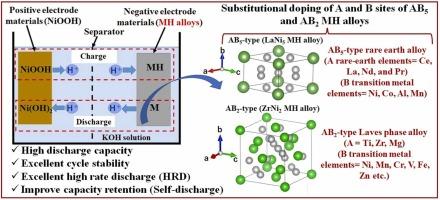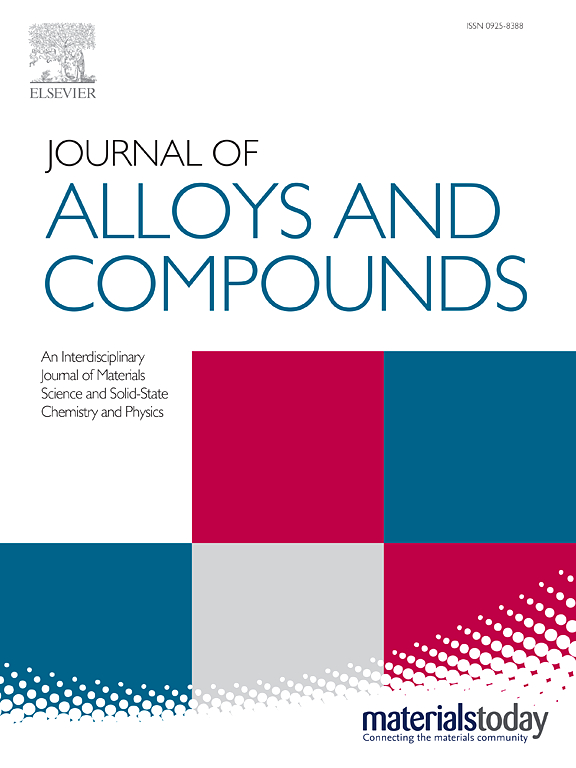Recent advances in substitutional doping of AB5 and AB2 type hydrogen storage metal alloys for Ni-MH battery applications
IF 6.3
2区 材料科学
Q2 CHEMISTRY, PHYSICAL
引用次数: 0
Abstract
Hydrogen absorption and desorption in metal alloys are of great interest for application as negative electrode materials in environment-friendly nickel-metal hydride (Ni-MH) aqueous batteries as well as safe hydrogen storage applications. In this review, we bring forward the recent development and new insights on the substitutional doping of the two key MH alloys, AB5-type rare-earth alloy, and AB2-type Laves phase alloys for application in Ni-MH batteries. The substitutional doping in the A or B sites of the AB5-type and AB2-type alloys is significant in enhancing performance and stability for hydrogen storage and as an anode material of Ni-MH batteries. The rare-earth site A and transition metal site B in an AB5-type alloy have been doped by several other rare-earth and transition metal elements with various compositions. Similarly, A and B sites containing transition metals of the AB2-type Laves phase alloys are doped with other rare-earth and transition metals in different compositions to develop novel MH alloys. Further, high entropy alloys (HEAs) are studied to obtain better chemical activity and stability for hydrogen storage at room temperature as a prospective material for application in Ni-MH batteries. Thus, this review provides a detailed understanding on the doping approaches for the two key MH alloys of AB5-type and AB2-type alloys, additionally, HEAs as novel electrode materials for Ni-MH batteries and hydrogen storage energy technologies.

AB5和AB2型储氢金属合金在镍氢电池中的替代掺杂研究进展
金属合金的吸氢和解吸氢是环境友好型镍氢(Ni-MH)水电池负极材料和安全储氢应用的重要研究方向。本文综述了ab5型稀土合金和ab2型Laves相合金在镍氢电池中应用的最新进展和新见解。在ab5型和ab2型合金的A位或B位进行取代掺杂,对于提高储氢性能和作为镍氢电池负极材料的稳定性具有重要意义。ab5型合金中的稀土位点A和过渡金属位点B被几种不同成分的稀土和过渡金属元素掺杂。同样,在含有ab2型Laves相合金过渡金属的A和B位点,以不同的成分掺杂其他稀土和过渡金属,以开发新型MH合金。此外,高熵合金(HEAs)在室温下具有良好的储氢活性和稳定性,有望应用于镍氢电池。因此,本文综述了ab5型和ab2型两种关键MH合金的掺杂方法,以及HEAs作为镍氢电池和储氢能源技术的新型电极材料。
本文章由计算机程序翻译,如有差异,请以英文原文为准。
求助全文
约1分钟内获得全文
求助全文
来源期刊

Journal of Alloys and Compounds
工程技术-材料科学:综合
CiteScore
11.10
自引率
14.50%
发文量
5146
审稿时长
67 days
期刊介绍:
The Journal of Alloys and Compounds is intended to serve as an international medium for the publication of work on solid materials comprising compounds as well as alloys. Its great strength lies in the diversity of discipline which it encompasses, drawing together results from materials science, solid-state chemistry and physics.
 求助内容:
求助内容: 应助结果提醒方式:
应助结果提醒方式:


